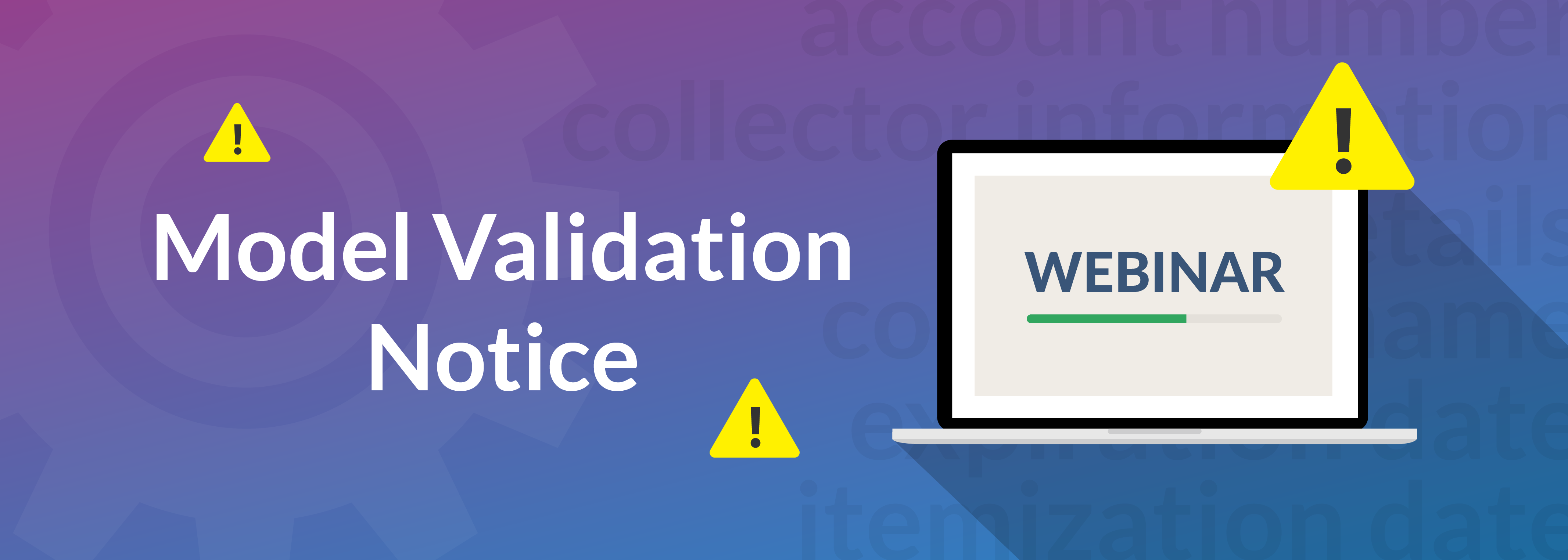How You’re Likely To Mess Up The Model Validation Notice
The November 30, 2021 deadline is just around the corner, and the time to prepare is now. Our panel of industry experts is here to help your collection agency avoid compliance infractions and lawsuits surrounding validation notices.
What is a Validation Notice?
A validation notice is a form that collection agencies send to account holders to provide them with necessary information regarding a debt, such as final notification letters. The Legislation changes known as Reg F have provided a model that agencies can use when creating future validation notices. While these requirements do not entirely safeguard agencies from legal action, they hold both consumers and debt collection agencies accountable through the documentation of communications and dates.
Does it Really Matter?
One might ask, “Why go through all this headache if I am going to be sued regardless?” Even though it is true that following this model validation notice does not guarantee protection, it does improve your chances in court and makes it harder to create a solid case against you if you have all of the necessary information in the given constraints.
What does my validation notice have to have on it?
When sending a validation notice, certain information must be included. Most agencies remember to put the account number, the Mini-Miranda, and information about the debt, such as the collector’s information, the consumer’s name, and the creditor’s information. The trickiest sections of the validation notice that most agencies are likely to mess up are the itemization date, the expiration date, and the improper use of the safe harbor defense.
Using an Itemization and Expiration Date Properly
Under the current Reg F guidelines, there are five options of dates that debt collection agencies can use as itemization dates:
- The last statement date
- The charge-off date
- The last payment date
- The transaction date
- The judgment date
When using an itemization date, the most important thing to remember is that this date cannot change after its initial use for each account. You cannot send the initial itemization date using the last payment date and later reference the charge-off date. Consistency is key.
Expiration dates can also be tricky. Agencies can no longer state that action is required within 30 days of the notice. Each notice requires a specific date. The 30 days must be set from the day the validation notice is received, which can be assumed to be five days after sending, excluding weekends and holidays.
Safe Harbor
In the unfortunate case of a lawsuit, debt collectors are entitled to the use of a safe harbor defense for the use of the model validation notice. For this defense to be effective in court, the provided validation notice must be clear, conspicuous, and considerably similar to the Model Form B-1 provided by the CFPB. Only the first page of validation notices can receive protection from the safe harbor defense, and this defense does not guarantee a ruling in your favor.
While none of the mentioned guidelines can guarantee protection from legal action, consistently following the model validation notice and the new regulatory guidelines can help decrease the number of cases brought against your agency.
Listen to our panel of experts to learn more about potential mistakes in your validation notices and how to keep your agency safer. TCN also offers more ways to stay compliant with a complete compliance suite of tools to help you stay in line with current regulations.
